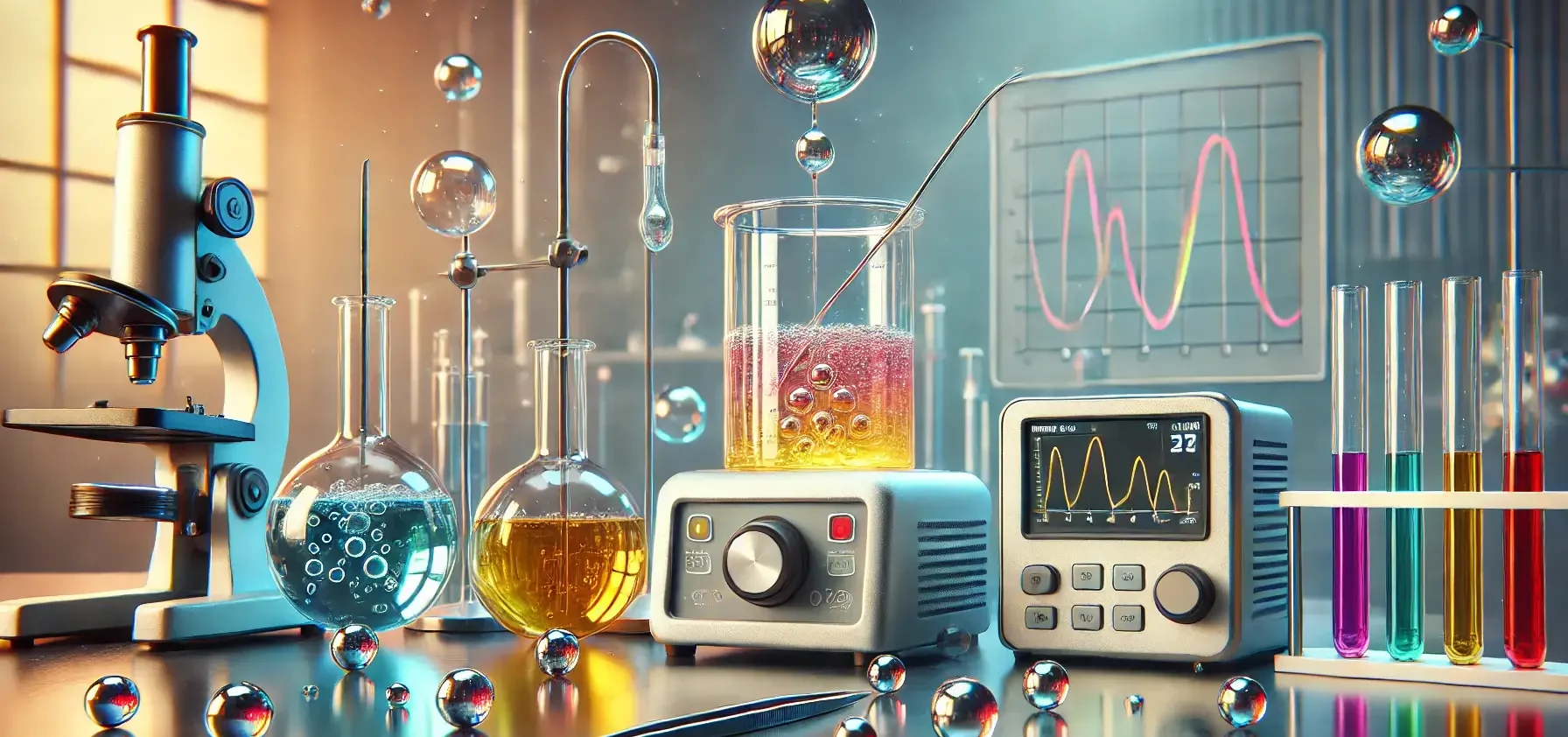- Polarography is an electroanalytical technique introduced by Jaroslav Heyrovsky in 1922.
- It measures the current-potential (I-V) relationship by applying a gradually increasing voltage to a working electrode in a solution containing the analyte.
- The current results from redox reactions at the electrode surface.
Principle of Polarography
- Polarography is based on measuring current as a function of applied potential to study the electrochemical behavior of chemical species.
- The technique focuses on redox reactions at the surface of a working electrode when the potential is varied.
Advertisements
Key Components of Polarography:
- Working Electrode: Usually a dropping mercury electrode (DME) or static mercury drop electrode (SMDE).
- Reference Electrode: Maintains a stable, known potential.
- Counter Electrode: Completes the circuit.
- Sample Solution: Contains the analyte and supporting electrolyte.
- Potentiostat: Controls potential and measures current.
Steps in Polarographic Experiment:
- Electrodes are immersed in the sample solution.
- A linearly changing potential is applied to the working electrode.
- Redox reactions occur at specific potentials, generating a current.
- The current is plotted against potential to form a polarogram, which shows peaks or steps indicating the concentration and behavior of analytes.
Advertisements
Ilkovic Equation
- The Ilkovic equation relates the diffusion current measured in a polarographic experiment to the concentration of the electroactive species (analyte) in solution.
- It was derived by Slovak chemist Dionýz Ilkovič in 1934.
i_d = 2.69 × 10⁵ × n × √D × C × d
Where:
Advertisements
- id = diffusion-limited current (in microamperes, µA)
- n = number of electrons transferred in the redox reaction
- D = diffusion coefficient of the analyte (in cm²/s)
- C = concentration of the analyte (in mol/cm³)
- d = diameter of the mercury drop (in cm)
This equation is particularly applicable to a Dropping Mercury Electrode (DME), where the mercury drop grows and detaches from the electrode at regular intervals. The Ilkovic equation assumes steady-state conditions with diffusion as the primary mass transport mechanism, and negligible effects from migration and convection.
Click Here to Watch the Best Pharma Videos
Advertisements

